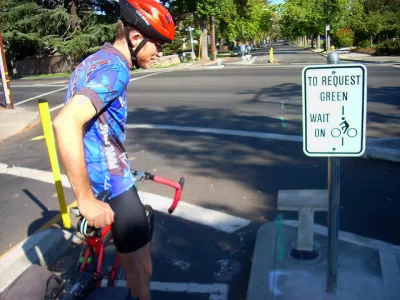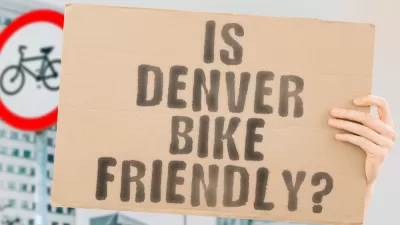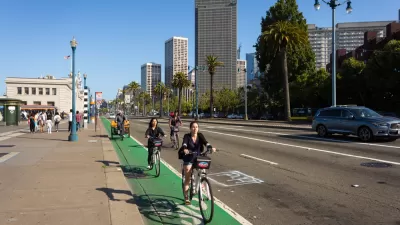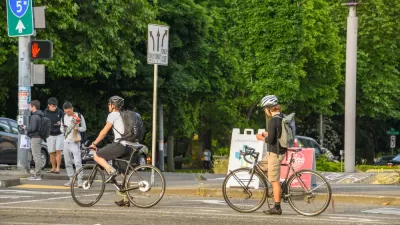Colorado is the latest state to make it legal for people on bikes to treat stop signs like yield signs when no cars are in the intersection.

Colorado Governor Jared Polis signed the “Colorado Safety Stop” into law on April 13, 2022, making it legal for people on bikes to treat stop signs as yield signs and treat stop lights as stop signs, according to an article by Bicycle Colorado.
The article cites data that shows the Safety Stop—known in bicycle and planning circles as the Idaho Stop—reduces collisions involving people on bikes and automobile. Delaware, which adopted a similar law in 2017, has seen a 23 percent drop in collisions involving bicycles at stop sign controlled intersections. Researchers from DePaul University published a study in 2016 that also supported Idaho Stops for the safety of people on bikes.
Bicycle Colorado also provides additional information on the new law, as listed in the source article:
- Younger bicyclists may perform the maneuver if an adult is present.
Bicyclists can yield and then proceed through stop sign-controlled intersections at up to 10 miles per hour. - Intersections where bicyclist-specific lights or signs are present that prohibit the maneuver are exempt from the new law.
- The bill defines “low speed conveyances” in Colorado law. These are small profile, low-speed vehicles that people use for transportation and recreation, including bicycles and electric bicycles, electric scooters (not including mopeds), and wheelchairs.
The Colorado Legislature approved the law in March 2022, paving the way for this week’s historic bill signing. Bicycle Colorado says the law has been in the works for years.
The state of Colorado now joins Idaho, Delaware, Arkansas, Oregon, Washington, North Dakota, Utah – 2021, and Oklahoma among states where the Idaho Stop is the law of the land. California could have been on the list, but Gov. Gavin Newsom vetoed AB 122 in 2021.
FULL STORY: The Colorado Safety Stop is the law of the land

Study: Maui’s Plan to Convert Vacation Rentals to Long-Term Housing Could Cause Nearly $1 Billion Economic Loss
The plan would reduce visitor accommodation by 25,% resulting in 1,900 jobs lost.

North Texas Transit Leaders Tout Benefits of TOD for Growing Region
At a summit focused on transit-oriented development, policymakers discussed how North Texas’ expanded light rail system can serve as a tool for economic growth.

Why Should We Subsidize Public Transportation?
Many public transit agencies face financial stress due to rising costs, declining fare revenue, and declining subsidies. Transit advocates must provide a strong business case for increasing public transit funding.

How to Make US Trains Faster
Changes to boarding platforms and a switch to electric trains could improve U.S. passenger rail service without the added cost of high-speed rail.

Columbia’s Revitalized ‘Loop’ Is a Hub for Local Entrepreneurs
A focus on small businesses is helping a commercial corridor in Columbia, Missouri thrive.

Invasive Insect Threatens Minnesota’s Ash Forests
The Emerald Ash Borer is a rapidly spreading invasive pest threatening Minnesota’s ash trees, and homeowners are encouraged to plant diverse replacement species, avoid moving ash firewood, and monitor for signs of infestation.
Urban Design for Planners 1: Software Tools
This six-course series explores essential urban design concepts using open source software and equips planners with the tools they need to participate fully in the urban design process.
Planning for Universal Design
Learn the tools for implementing Universal Design in planning regulations.
City of Santa Clarita
Ascent Environmental
Institute for Housing and Urban Development Studies (IHS)
City of Grandview
Harvard GSD Executive Education
Toledo-Lucas County Plan Commissions
Salt Lake City
NYU Wagner Graduate School of Public Service





























